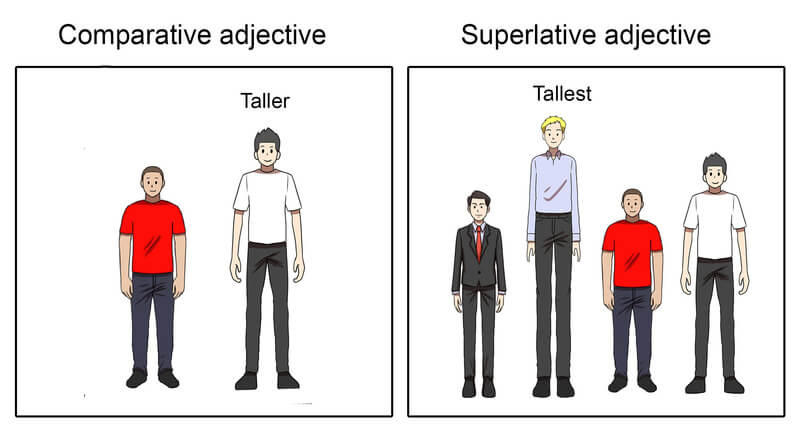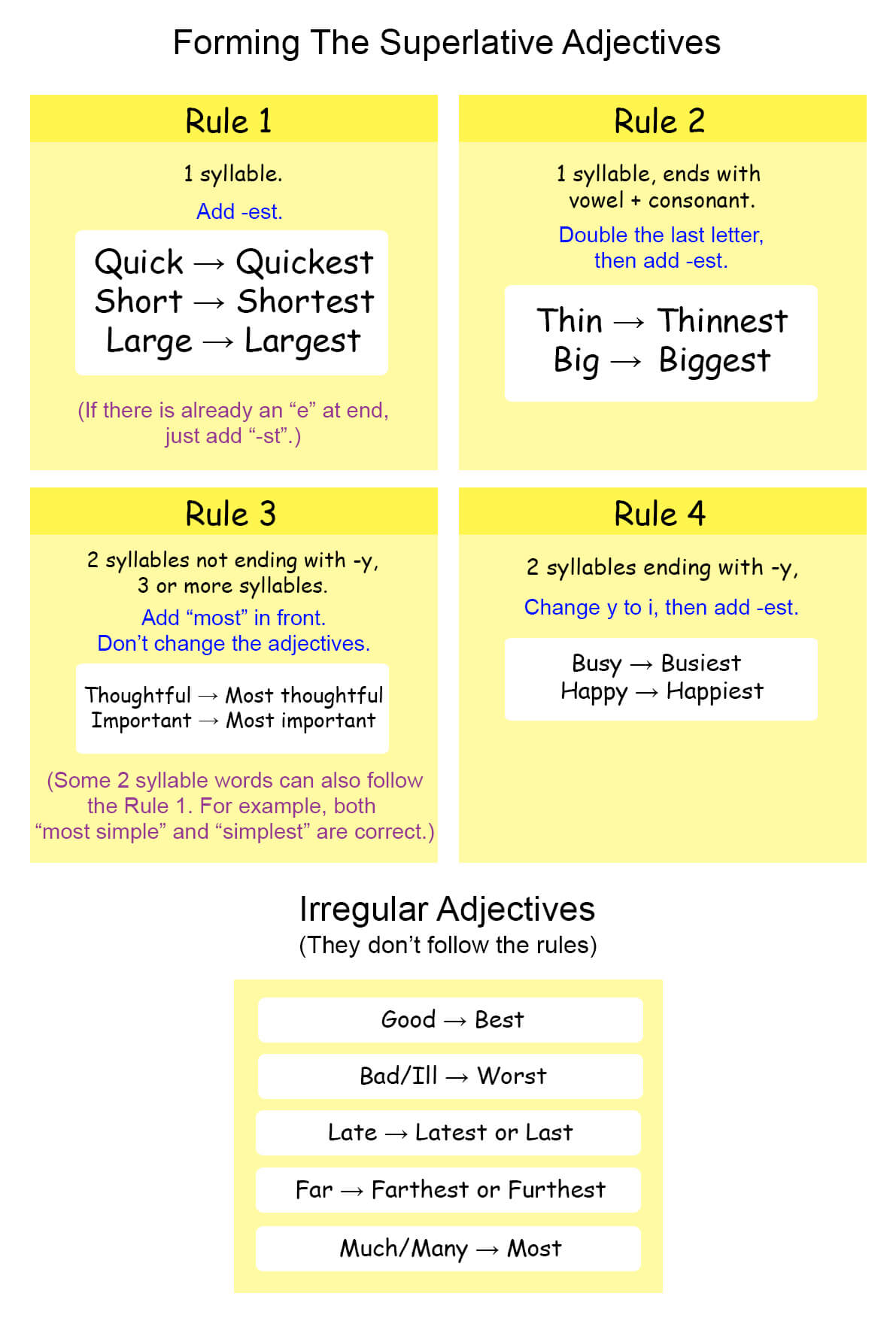Superlative Adjectives
- Superlative adjectives describe the highest degree of quality among three or more items.
- We form superlative adjectives in different ways depending on the number of syllables.
- Use "the" before superlative adjectives.
Superlative adjectives help us show the highest degree of a quality among three or more things. Let's learn how to form and use them.

Forming Superlative Adjectives
We form superlative adjectives based on the number of syllables in the adjective. Here are the rules:
Rule 1: For one-syllable adjectives, add -est.
Examples: quick → quickest, short → shortest, large → largest
Rule 2: For one-syllable adjectives ending in a vowel + consonant, double the last letter and add -est.
Examples: thin → thinnest, big → biggest
Rule 3: For adjectives with two syllables not ending in -y, or adjectives with three or more syllables, add "most" before the adjective.
Examples: thoughtful → most thoughtful, important → most important
Rule 4: For two-syllable adjectives ending in -y, change the -y to -i and add -est.
Examples: busy → busiest, happy → happiest
Some adjectives are irregular and don't follow these rules. Here are a few:
Good → best, bad → worst, far → farthest/furthest

Basic Grammar of Superlative Adjectives
Grammar Rule: Subject + be verb + "the" + superlative adjective + (optional object).
Note that you should place "the" in front of a superlative adjective.
Examples:
-
She is the smartest student in the class.
Subject ("She") + be verb ("is") + the + superlative adjective ("smartest") + object ("student in the class").
-
This is the most interesting book I have ever read.
Subject ("This") + be verb ("is") + the + superlative adjective ("most interesting") + object ("book I have ever read").
Superlative adjectives help us describe the highest degree of a quality among three or more items. Practice using these rules to improve your English skills!
Practice this topic with the AI English Tutor
AI English Tutor will teach you the grammar and practice it with you in a conversation format. Plus, 100+ practice questions on this topic to cement your understanding.
Try ALULA for free on your phone or tablet








Do you have any questions about this lesson? Ask in the comment section, below.